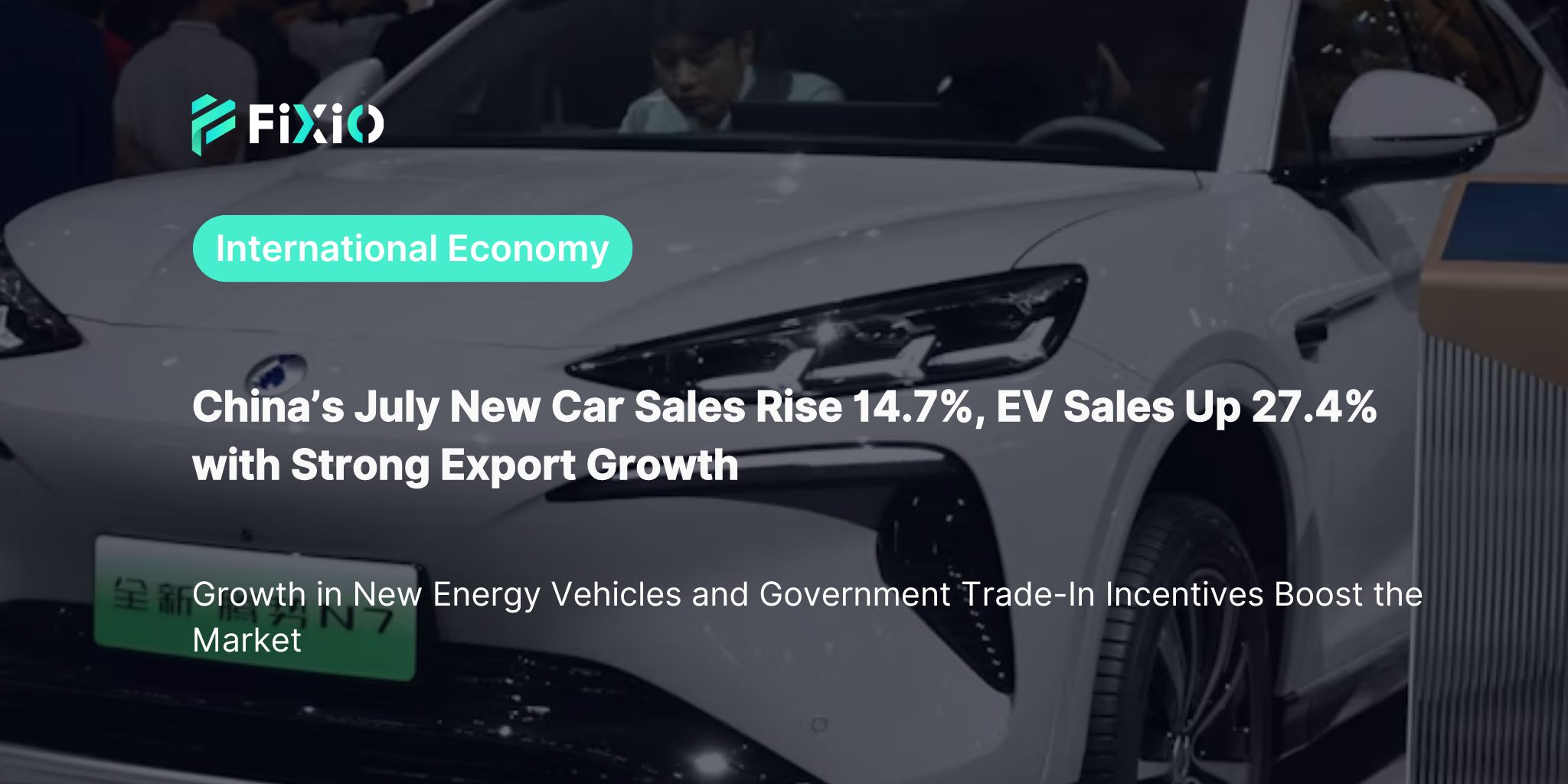
According to the latest data from the China Association of Automobile Manufacturers (CAAM), China's new car sales in July 2025 rose 14.7% year-on-year to 2.593 million units. This growth was driven by government incentives for vehicle replacement, increasing consumer preference for electrification, and progress in infrastructure development. Particularly notable was the strong performance of New Energy Vehicles (NEVs), with 1.262 million units sold, marking a 27.4% year-on-year increase. Within NEVs, BEVs reached 811,000 units (up 47.1%) and PHEVs reached 451,000 units (up 2.8%), pushing NEV market share to a record high of 48.7%.
This surge reflects the Chinese government's aggressive push for electrification in the automotive sector as part of its "carbon peak and carbon neutrality" policy. In addition to purchase subsidies and tax incentives, rapid expansion of charging infrastructure has further boosted consumer demand.
Vehicle exports in July totaled 575,000 units, up 22.6% year-on-year. NEV exports grew an impressive 120% year-on-year, with major destinations including the European Union, Southeast Asia, and the Middle East. In Europe, stringent emission standards and mandatory EV adoption policies have increased the competitiveness of Chinese-made EVs.
Domestically, the competitive landscape has become tougher. Both established automakers and emerging EV manufacturers have been slashing prices to gain market share, raising concerns about industry-wide margin erosion. Leading players such as BYD, Tesla China, NIO, and XPeng are competing fiercely on both pricing strategies and technological innovation.
By company, XPeng posted 36,717 units sold, a 229% year-on-year increase, achieving rapid growth. In contrast, Li Auto and NIO saw sales declines, and BYD managed only slight growth. Tesla's China-made EV sales fell 8.4% year-on-year, highlighting the intensifying competition.
To accelerate NEV adoption, the Chinese government plans to maintain subsidy programs gradually beyond 2025 and strengthen local government incentive schemes. The "trade-in for new" policy offers subsidies to consumers who scrap older gasoline vehicles and switch to EVs, stimulating demand. However, the uncertainty surrounding US–China trade negotiations remains a risk. The US is considering tariffs and import restrictions on Chinese-made EVs, which could hinder export growth. In addition, the EU is contemplating trade measures such as anti-dumping investigations in response to the surge in Chinese EV imports.
The global EV market accounts for about 25% of total new car sales as of 2025 and is projected to exceed 50% by 2030. China commands roughly 60% of this market and leads the world in technologies such as lithium-ion batteries and charging infrastructure. However, the competitive environment is evolving rapidly. In the US, Tesla and GM are expanding their EV lineups, while in Europe, Volkswagen and Mercedes-Benz are ramping up EV offerings and stepping up their push into the Chinese market. In emerging markets, countries like India, Thailand, and Indonesia are strengthening EV policies, contributing to a reconfiguration of the global supply chain.
China’s July new car sales were lifted by the sharp growth of NEVs, but both domestic and international competition and policy risks remain key challenges. Continued government support and technological innovation could sustain China’s leadership in the global EV market for the foreseeable future. However, preparing for global trade frictions, intensifying competition, and diversifying to meet evolving consumer needs will be essential for sustained growth.
For more detailed market analysis and the latest news, visit the FIXIO Blog.
This article provides a detailed analysis of China's new car sales trends in July 2025. Based on official data from the China Association of Automobile Manufacturers, it explains the 14.7% year-on-year growth, particularly driven by the rising demand for New Energy Vehicles (NEVs) and Electric Vehicles (EVs). It also covers the increase in export volumes, intensified price competition, and the uncertainty surrounding U.S.-China trade negotiations, offering a comprehensive outlook on future industry trends and challenges.
Superior trade execution & trading conditions with the NDD method.

The online FX industry provides a platform for investors worldwide to engage in the buying and selling.

Subscribe to our daily newsletter and get the best forex trading information and markets status updates
Trade within minutes!
Comment (0)